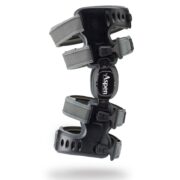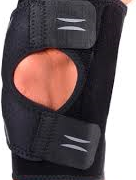Knee OA
Knee OA, or osteoarthritis of the knee, is usually experienced as persistent pain in one or both of your knees. This condition is usually diagnosed in older adults; however, it is also occasionally diagnosed in young adults as well. Knee OA is common and affects millions of people every year
What Are The Symptoms Of Knee Osteoarthritis?
One of the most common symptoms of osteoarthritis of the knee is persistent pain. However, if you have knee OA, you may also experience swelling and stiffness in your knee joint which will interfere with your ability to walk and move. In some cases, knee OA can also cause bone spurs which can make your pain even worse.
How Does Knee OA Develop?
Osteoarthritis is a type of wear-and-tear condition in the human body and can be found in many of the body’s joints. Knee OA, in particular, occurs when the cartilage of the knee joints is worn away over time. This cartilage naturally cushions the joints to facilitate easy and pain-free movement. When this cartilage is worn away, movement can be painful as your knee bones start to rub together.
Specifically, knee OA develops as a result of many factors. Most cases are diagnosed later in life and people over the age of forty-five are most commonly afflicted. However, it s also a hereditary condition. If you have a parent who already has knee OA, then your chances of developing the condition are greater. Women are also more likely to develop osteoarthritis of the knee as well.
Certain lifestyle choices can cause knee OA to develop over time. Activities such as long-distance running or soccer, among other sports involving a great deal of time on your feet, can wear down knee cartilage. Repetitive strains from kneeling and squatting also put pressure on your knees and can bring on knee OA if these activities are common in your life.
How Can Osteoarthritis of the Knee Be Prevented?
Based on the causal factors behind the development of knee OA, it can be difficult to completely prevent the condition. However, any activities that strengthen the knee joints will be beneficial for keeping your legs in top shape. Moderate exercise, for example, is good to this end. Exercise may even be prescribed as part of your treatment protocol in the event that you already have knee OA.
Treatment For Knee Osteoarthritis
If you suspect that you have knee OA, then consult with your doctor as soon as possible. He or she will likely perform blood tests and conduct an X-ray on your leg to confirm the diagnosis. If you do have the condition then, depending on the severity, you may need to undergo knee surgery. However, non-surgical interventions, including knee bracing, weight loss, and physical therapy are common.
The pain caused by knee OA can significantly impair your ability to perform daily tasks and activities. It is important to get in touch the experienced team at Synergy Orthopedics for high-quality knee bracing. Everyday we work with your health care provider to ensure you find success with your treatment plan.







